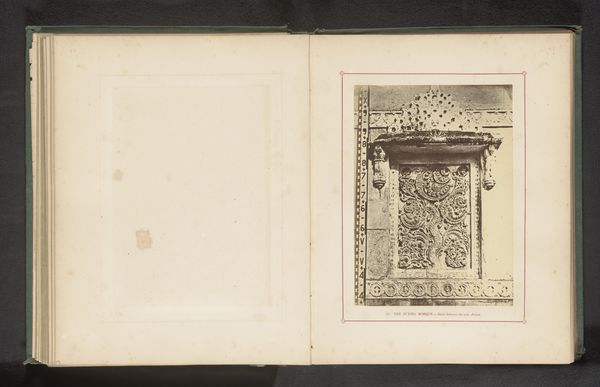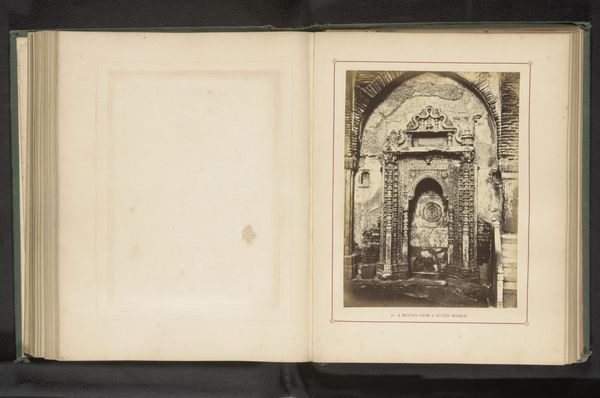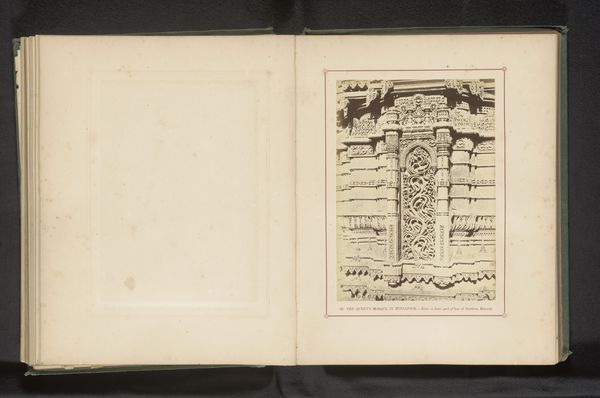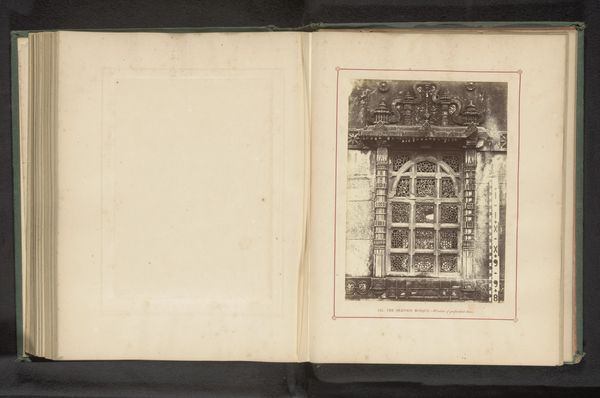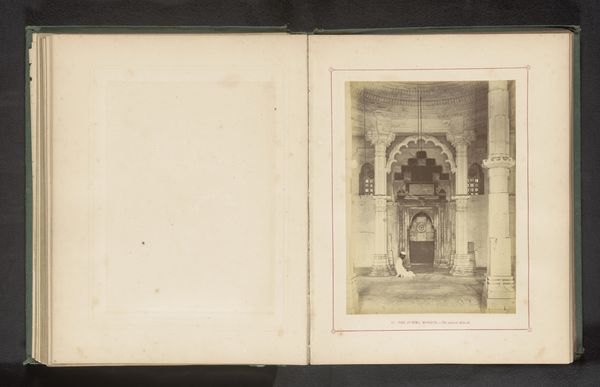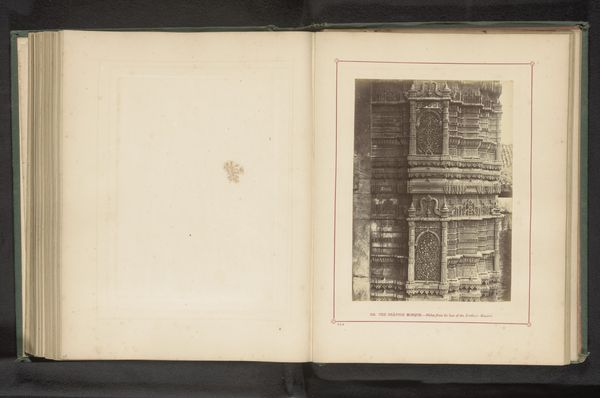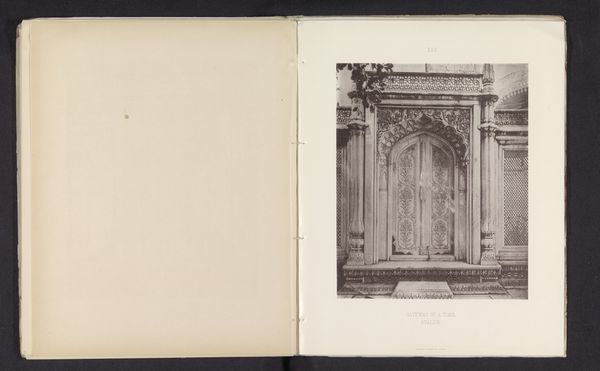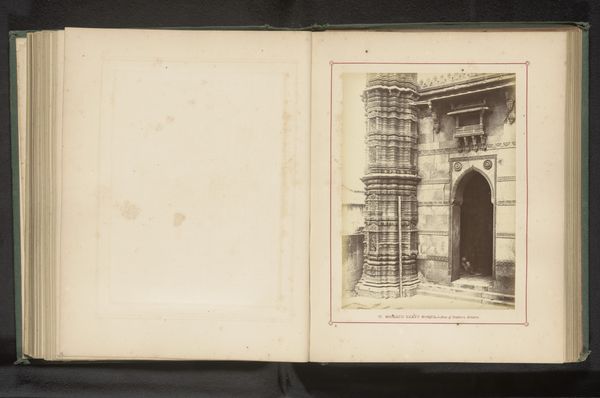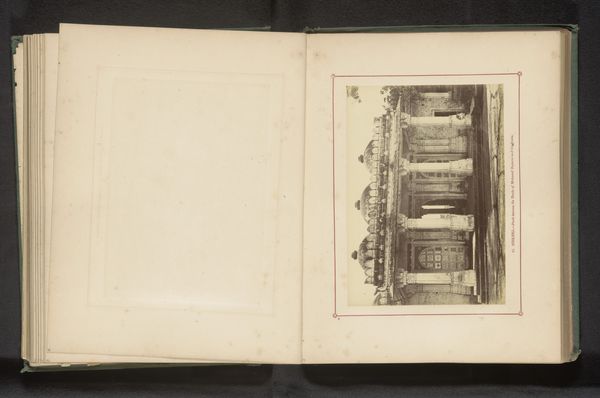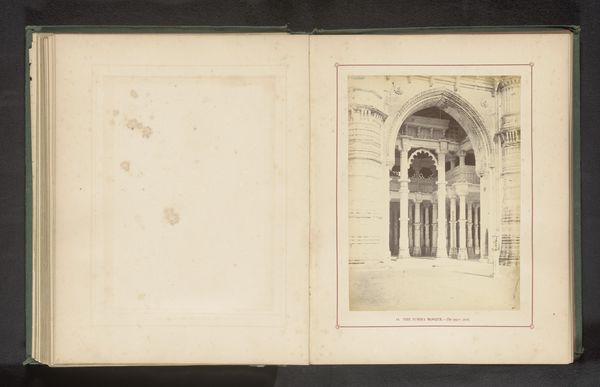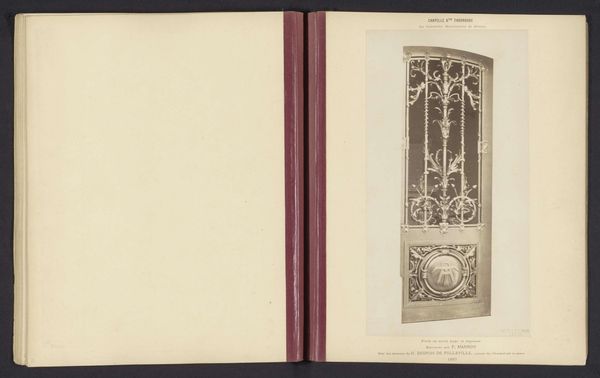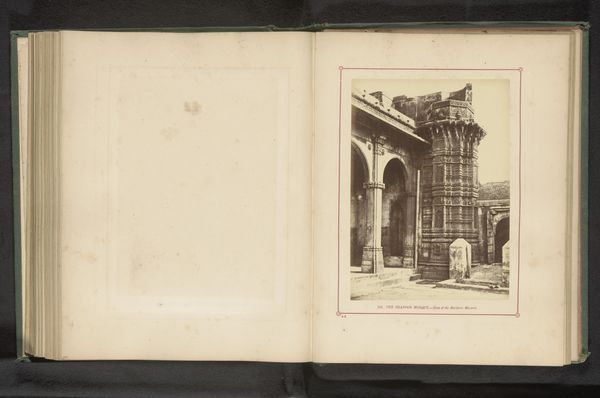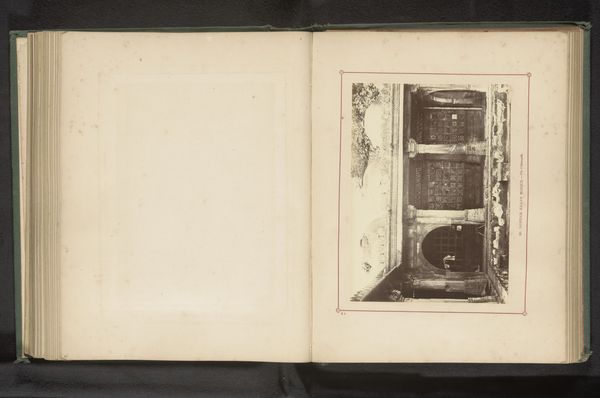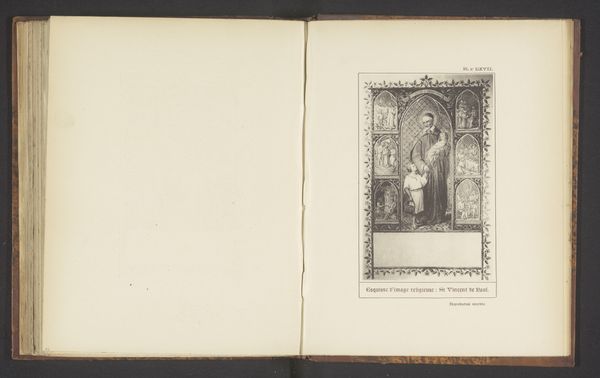
Decoratie van het basement van een minaret van de Muhafiz Khan-moskee in Ahmedabad before 1866
0:00
0:00
print, photography, architecture
#
ink paper printed
# print
#
landscape
#
photography
#
ancient-mediterranean
#
islamic-art
#
architecture
#
realism
Dimensions: height 199 mm, width 145 mm
Copyright: Rijks Museum: Open Domain
Curator: This photograph captures a section of the Muhafiz Khan Mosque in Ahmedabad, specifically focusing on the minaret's basement decoration. Taken before 1866, it offers a glimpse into the intricate details of Islamic architecture in the region. Editor: It strikes me immediately how incredibly detailed the carving is. It's almost lace-like in its delicacy. I’m drawn to the complexity of the geometric patterns—they evoke a sense of awe and the skill required to produce them. Curator: Indeed. Photography in this period served as vital documentation of architectural styles, particularly those found outside the European context. Think about how images like these, reproduced as prints, circulated through colonial networks, shaping perceptions of non-Western artistry and civilizations. Editor: So, this photograph could also function as a form of colonial gaze? Framing Islamic art through a specific, possibly orientalist lens? Were these images meant to inspire awe, or perhaps subtly reinforce a narrative of Western superiority through documentation? Curator: It’s complex. The detail captured serves both to preserve visual data and to categorize culture. This image can also serve as inspiration. Architects studied these photographs. Consider the architectural revival movements where non-Western aesthetics influenced design. This could be simultaneously exploitative and generative, depending on the agency and context. Editor: It is intriguing to think of it as both a colonial tool and a potential wellspring of cross-cultural inspiration. Islamic art is full of rich geometric patterns, they often incorporate complex theological symbolism. I am curious about how accessible those symbolic meanings were—or even *are*— to audiences outside the tradition. Is something inevitably lost? Curator: Potentially. However, that doesn't invalidate the ability of individuals from different backgrounds to engage. Abstraction itself facilitates different perspectives. We could then consider its ongoing importance to conversations around cultural appropriation and decolonization. Editor: That’s a point that helps bring us back to the contemporary world. This pre-1866 photograph allows us a point of connection and continuing examination of art history. Curator: Exactly. It showcases the enduring importance of critically analyzing visual sources. The power structures are as interesting as the beautiful designs.
Comments
No comments
Be the first to comment and join the conversation on the ultimate creative platform.
